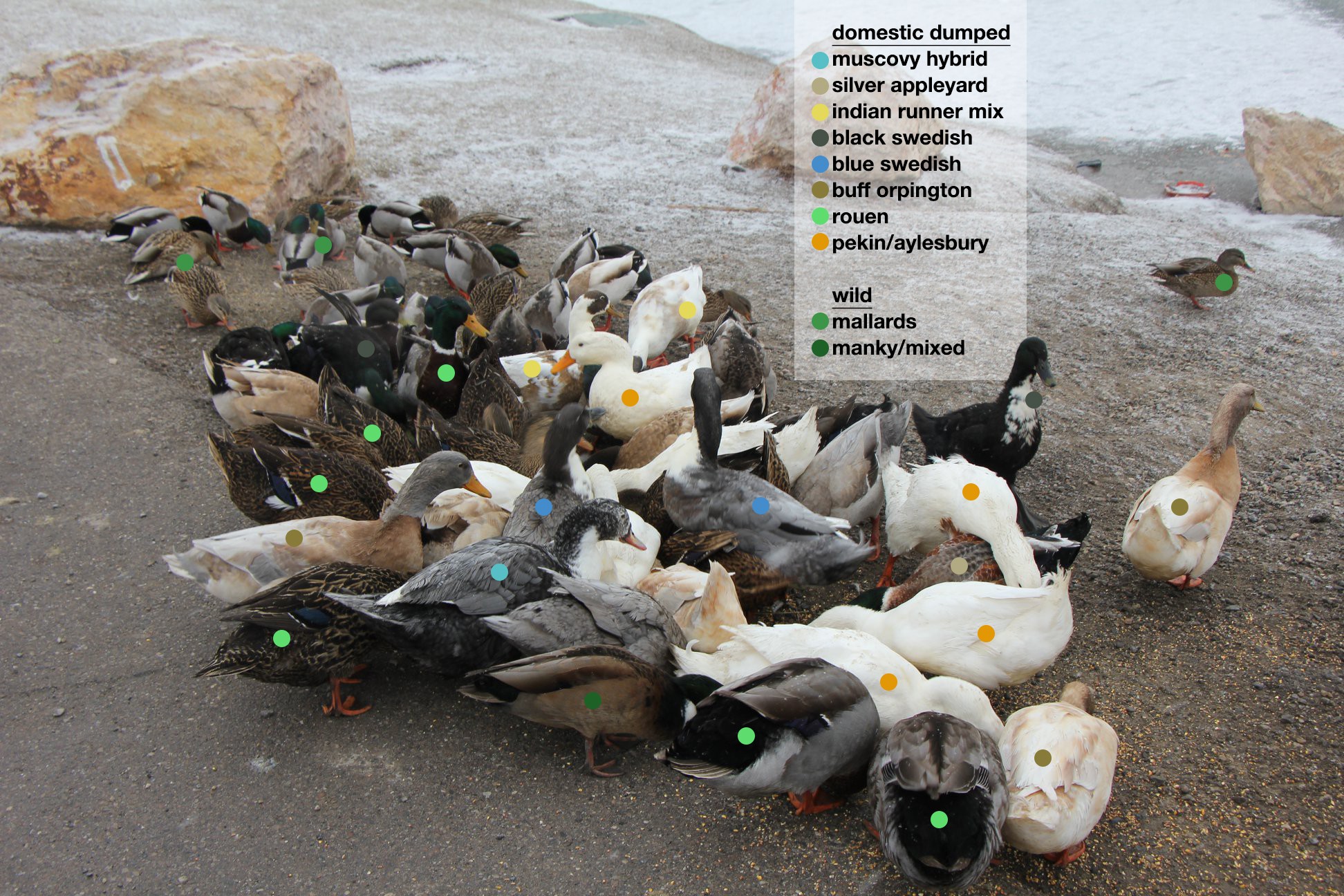Have you ever visited a local park with a pond and seen ducks swimming peacefully, perhaps even approaching the edge hoping for a snack? The idea of petting a duck might cross your mind, especially if they seem friendly. But before you reach out to touch a duck, particularly in a park or natural setting, it’s important to understand the complexities of interacting with these animals. Are they truly wild, and is petting them a good idea? This article will explore the nuances of duck behavior in public spaces, focusing on why the ducks you see might not be as “wild” as you think and the best ways to appreciate them responsibly.
Many people visit parks expecting to see and interact with “wild ducks.” However, a significant issue in many public parks, like Highland Glen Park in Utah, is the presence of dumped domestic ducks. These are not wild animals; they are domesticated breeds, often abandoned by owners who no longer want them. Distinguishing between wild and domestic ducks is crucial for understanding appropriate interaction. Wild ducks, like Mallards, are typically smaller, more wary of humans, and capable of flight. Domestic ducks, on the other hand, are often larger – sometimes two to four times the size of a Mallard – and much more approachable, even seemingly friendly. All-white ducks seen in parks are almost always domestic breeds, such as Pekin ducks, and many domestic ducks are bred to be too heavy to fly effectively.
The presence of dumped domestic ducks in parks like Highland Glen creates numerous problems. Firstly, abandoning domestic animals is illegal and considered animal cruelty in many places, including under Utah code. These ducks are bred for domestic environments and are ill-equipped for survival in the wild. They often rely on humans for food, especially during colder months when natural food sources become scarce. When handouts decrease, particularly after summer when park attendance drops, these ducks can starve.
Even with regular feeding by park visitors, dumped domestic ducks face numerous dangers. They are vulnerable to predators, including off-leash dogs, and are susceptible to injuries, particularly from fishing lines and hooks left behind by anglers. The larger breeds of domestic ducks are especially prone to health issues because they require more nutritious food than they typically find or are given in park environments.
Furthermore, dumped domestic ducks disrupt the natural ecosystem. They contribute to overpopulation in park ponds, breed with wild ducks resulting in hybrid offspring (“manky mallards”) that compete with wild birds for resources. Their presence also degrades water quality and damages shorelines and native plant life due to increased waste and foraging habits. Across multiple ponds in Utah, hundreds of dumped domestic ducks and geese have been observed, many readily approaching people for food, highlighting the extent of this problem.
It’s easy to see ducks in a park like Highland Glen and assume they are thriving. However, the reality is often harsh. Highland Glen Park has a history of duck suffering. Wild ducks have been found injured by arrows, and domestic ducklings, often impulse buys, are frequently abandoned at the pond when owners realize they can’t care for them. These abandoned ducklings are particularly vulnerable. One rescued Indian Runner duckling from Highland Glen was found crying in distress and tragically had to be euthanized due to ingesting a fish hook, revealed in an x-ray.
Beyond ingested hooks, ducks at Highland Glen and similar parks frequently suffer from injuries caused by fishing line entanglement, leading to severe leg and foot wounds. Rescues from this park include ducks like Maude, scalped from aggressive mating and suffering leg injuries, and Kenny, rescued with a serious leg injury requiring drains and extensive recovery. Doogie, another Highland Glen rescue, is currently recovering from a severe toe infection caused by a fish hook, requiring significant veterinary care. The bone in his toe was eroded by infection, highlighting the painful consequences of discarded fishing tackle.
Even intentional cruelty occurs. A Pekin duck at Highland Glen was shot with an arrow, fracturing her wing. While she survived, requiring a month of foster care, this incident underscores the dangers domestic ducks face from human actions in parks. Wild ducks are not immune either, suffering from injuries like face abscesses and leg injuries, often also caused by fish hooks.
Injuries and deaths in park ducks are often wrongly attributed to “mother nature.” In reality, they are frequently the result of human negligence – dumping domestic ducks, discarding fishing line, and general carelessness. These issues are preventable with responsible actions.
So, Can You Pet Wild Ducks? While the ducks in parks might seem approachable, and the desire to interact is natural, it’s generally best to admire them from a respectful distance. Focus on observing their behavior without direct physical contact. If you feel compelled to interact, consider offering appropriate food, like scratch grains or cracked corn, but do so responsibly. Never feed ducks bread, as it lacks nutritional value and contributes to health problems and water pollution. Feed sparingly, near the shoreline, and only what they can consume in a few minutes to avoid attracting pests or contaminating the water.
Instead of petting, the most helpful action you can take is to educate others about responsible pet ownership and the negative impacts of dumping domestic ducks. Encourage people to consider rescuing ducks if they want them as pets and emphasize that domestic ducks are a long-term commitment, not to be abandoned in parks. Support local wildlife rescue organizations that care for injured and abandoned waterfowl.
It’s important to also be mindful of wild duck populations. Overfeeding wild ducks can lead to overpopulation, ironically increasing the risk of culling, a practice used in some areas, including Highland Glen, to manage duck numbers. This highlights the unintended consequences of well-meaning but misinformed interactions with park ducks.
Remember, domestic ducks belong in safe, controlled environments like farms or predator-proof yards, where they can thrive. They can be wonderful pets when properly cared for. The “lucky” ducks from Highland Glen are those that have been rescued and found safe, permanent homes.
By understanding the difference between wild and domestic ducks, recognizing the plight of dumped ducks, and practicing responsible interaction, we can better appreciate waterfowl in our parks and contribute to their well-being. Let’s choose compassion and informed action over fleeting moments of petting, ensuring a healthier and safer environment for all ducks.


